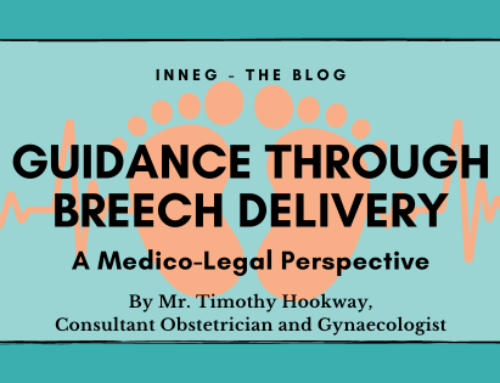Acoustic Neuroma and Medical Negligence
By Mr Kenan Deniz, Consultant Neurosurgeon
My name is Kenan Deniz. I am a Consultant Neurosurgeon in Leeds. I have a complex skull base neurosurgical practice and the management of acoustic neuromas is one of my areas of expertise. I regularly perform complex and lengthy operations for this condition.
Aside from my clinical work I also have a medicolegal practise and have been approached on a number of occasions for my opinion and to provide reports on cases involving the management of a patient diagnosed with an acoustic neuroma. There will always be some exceptions but generally these cases follow the same pattern and the clients are pursuing a case for medical negligence for similar reasons, usually a missed diagnosis and I shall explain shortly why this is important and how it would impact upon the client’s outcome and ultimately their life.
What is an Acoustic Neuroma?
But first some background information about acoustic neuromas. An acoustic neuroma is a benign tumour arising from the nerve of balance (the vestibular nerve) and so it is found at the skull base and more specifically located between the cerebellum and the pons (cerebellopontine angle). Very small acoustic neuromas measuring only a few millimetres in size will be localised to the internal auditory canal which is a bony channel within the skull through which the facial nerve and the vestibulocochlear nerves pass on their way to various structures that they innervate. Given the very small size of the tumours in this location it is here where these tumours are most commonly missed.

Acoustic neuromas can be asymptomatic and an entirely incidental finding on a brain scan performed for other clinical reasons. Symptomatic acoustic neuromas will commonly present with unilateral sensorineural hearing loss and this will commonly prompt an MRI scan of the head. Other presenting symptoms would include balance problems, tinnitus, and occasionally facial sensory disturbance particularly if the tumour is of a certain size.
Some people develop acoustic neuromas as part of a syndromic condition such as Neurofibromatosis Type 2 but the majority of these tumours are sporadic and unilateral. The three management strategies for these benign tumours comprise an expectant approach with regular surveillance scanning at well defined intervals, stereotactic radiosurgery or surgical excision of the tumour.
Management strategies will generally differ to some degree between neurosurgical centres and also will depend upon patient preference. However, small and medium-sized tumours which are radiologically stable on surveillance imaging can usually be managed with an expectant approach and ongoing surveillance at gradually lengthening intervals. A population of these tumours will grow to a certain size and then stop growing and if they are asymptomatic, the symptoms they produce are manageable and the associated mass effect upon adjacent brain structures is minimal then doing nothing is always a good option.
Those small and medium-sized tumours that are showing signs of growth on surveillance imaging can be managed with stereotactic radiosurgery which is a day case procedure where radiation is delivered very accurately to the tumour and carries a high chance of arresting growth with a very low complication rate.
Surgical excision tends to be reserved for large tumours causing brain stem compression, large tumours that are growing, medium-sized tumours where stereotactic radiosurgery has been unsuccessful in controlling growth and those patients who prefer the option of surgery because they struggle with the psychological effects of knowing that the tumour is there. Surgery is the only way the patient can be rid of the tumour.
The timing of diagnosis and the size of the tumour will ultimately dictate the preferred management strategies and so a missed diagnosis when the tumour is small will profoundly impact upon the gravity of the treatment and the potential complications the patient must endure potentially for the rest of their life.
Missed Diagnosis
A very common subject for medical negligence therefore revolves around a missed diagnosis when the tumour is small.
There are two separate subgroups of patients where the diagnosis is missed.
- There are those patients who present with symptoms that could be attributed to an acoustic neuroma, the clinician requesting the scan states on the request form that there is a clinical suspicion of an acoustic neuroma and dedicated scans to look for this tumour have been requested and yet the diagnosis is still missed. This would be more difficult to defend.
- The other subgroup comprises those patients where an acoustic neuroma is incidental and would be an unexpected finding and despite careful scrutiny of the scans the reporting Radiologist has not seen the tumour.
If a tumour is diagnosed when it is very small (2mm to 15mm) then in the first instance a period of surveillance will be commenced and if the tumour never changes then no active intervention will be necessary. However if growth is seen on one scan or even consecutive scans then stereotactic radiosurgery can be undertaken which is a day case, very well tolerated procedure which carries a high chance of arresting tumour growth (approximately 90%) and a very low risk of complications related to initial tumour swelling such as hydrocephalus (water on the brain) or facial nerve palsy with facial paralysis. Whilst technology is advancing it remains the case that stereotactic radiosurgery is a good option for small and medium-sized tumours and not for large tumours exerting pressure upon the brain stem as
post treatment tumour swelling is commonly seen and this could be life-threatening where there is pre-existing brain stem compression. So early diagnosis when stereotactic radiosurgery remains an option for the patient is certainly in the patient’s best interests to avoid a very significant surgical undertaking which comes with potential complication and morbidity.
Undiagnosed Small Acoustic Neuromas
Much of my medicolegal practice involves clients where a small acoustic neuroma was not diagnosed on historical scans but upon retrospective review the tumour is present but then the client presents, often years later, with symptoms related to the tumour and are found to have a large 3 – 4cm tumour with brain stem compression.
Under these circumstances an expectant approach with surveillance scans would not be preferable and stereotactic radiosurgery would not be a viable option and so the patient only has surgical intervention as an option. Surgery can be performed via a retrosigmoid or translabyrinthine approach depending on tumour size and morphology along with the extent of residual hearing and the expertise and experience of the regional neurosurgical unit. Either approach amounts to a very significant surgical undertaking involving often several hours of operating and a lengthy period of recovery (often a number of months). This type of surgery will inevitably come with a number of significant risks including infections, leakage of brain fluid, incomplete excision with subsequent regrowth needing further treatment, facial numbness, double vision, swallowing problems, usually complete loss of any residual hearing in the affected ear, stroke and disability and risk to life.
However a very important morbidity associated with the surgery is that of facial nerve injury resulting in facial paralysis on the affected side. This is an important part of patient counselling prior to surgery. With large tumours the facial nerve is often adherent to, and splayed over, the tumour surface which can make the nerve very difficult to preserve at surgery. Use of a facial nerve monitor to localise and track the nerve as well as testing the nerve’s function, and the decision to leave a small tumour residue on the nerve at the end of the operation can all help to preserve the nerve. However, with very large tumours there is still a significant risk of temporary or even permanent facial paralysis and despite plastic surgical procedures to try to reanimate the face further down the line the facial movements will unfortunately never return to how they were before. The psychological impact of facial paralysis upon the patient cannot be understated – this complication will be life-changing and will often be all consuming.
Summary
Thus, in summary, early diagnosis when the tumour is small means that a conservative approach with surveillance scans can be adopted and this may be all that is needed. However, if the tumour grows, stereotactic radiosurgery with a high chance of growth arrest and a very low rate of complication can be undertaken.
If the diagnosis is missed when the tumour is small such that it is then diagnosed a number of years later when it is very large with brain stem compression then the only option for the patient will be that of surgery which is a very significant surgical taking, a prolonged procedure with lengthy recovery and a significant chance of complication including facial paralysis which will profoundly affect the patients life including their self-confidence, their social interactions and their ability to leave the house and go out to work.
About the Author:
Mr Kenan Deniz, B.Sc. (Hons) M.B. B.Chir (Cantab) FRCS (Neuro.Surg) has been a Consultant Neurosurgeon at Leeds Teaching Hospitals NHS Trust since 2012. As of 2016 Mr Deniz became Head of complex Neurovascular Surgery & Chair of Regional Neurovascular MDT and as of 2018 the Head of Lateral Skull Base Surgery & Chair of Regional Skull Base MDT, both roles which he still holds.
Mr Deniz is also a Honorary Senior Lecturer at the Leeds Institute of Molecular Medicine (LIMM) part of the University of Leeds since 2012 together with the Neurosurgical Specialist Advisor to the British Boxing Board of Control since 2017.
Mr Deniz has been undertaking expert witness reports since 2017 on Neurosurgical and Spinal claims. Mr Deniz can be contacted at kenandeniz@inneg.co.uk for a copy of his CV and terms.




